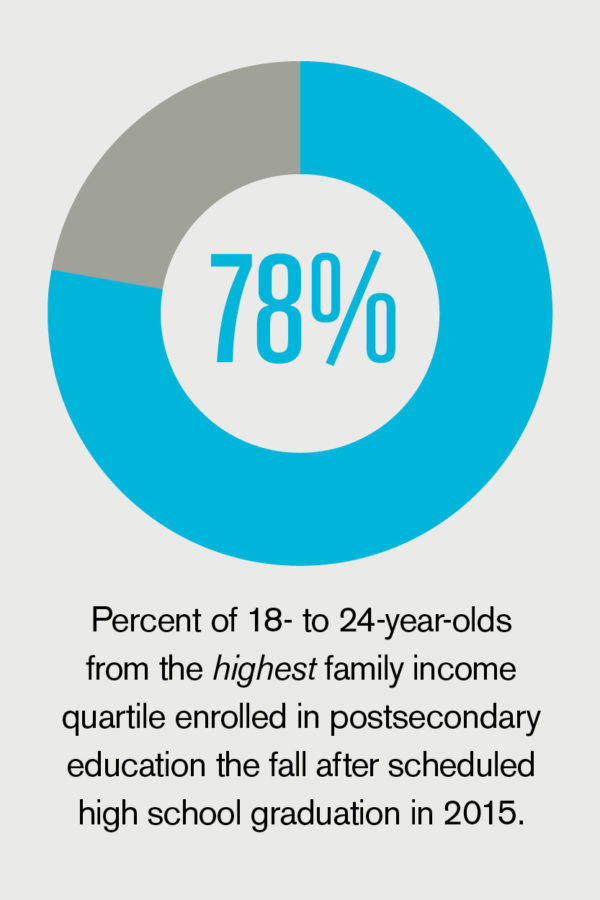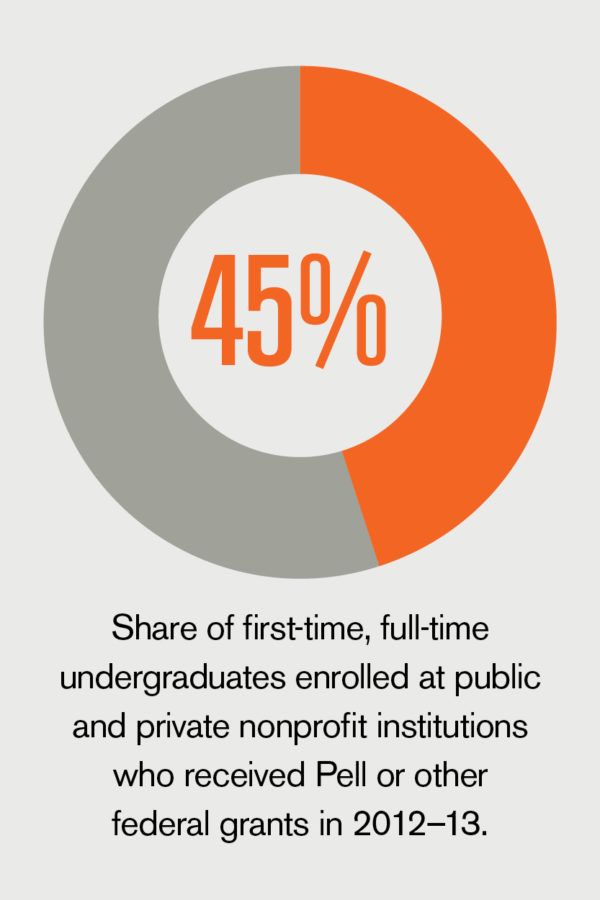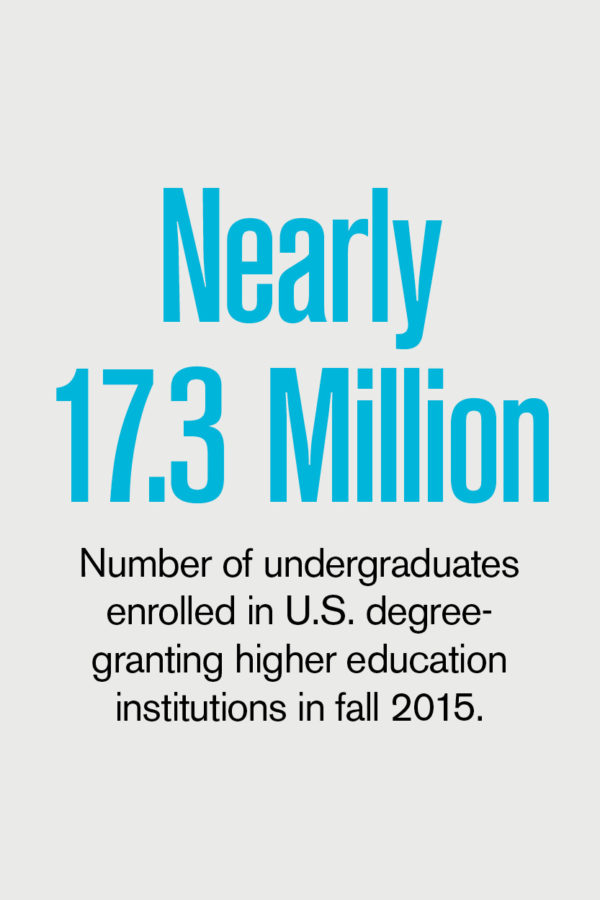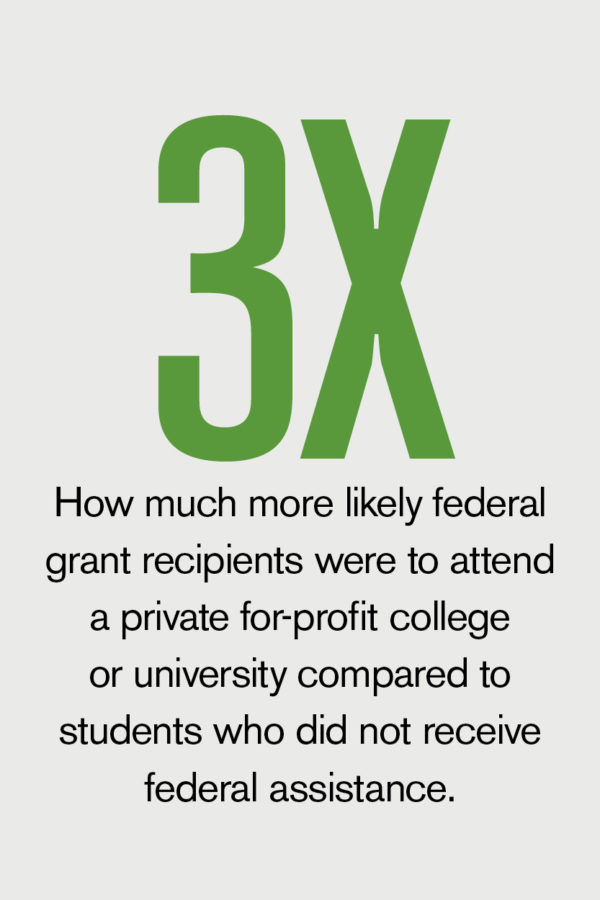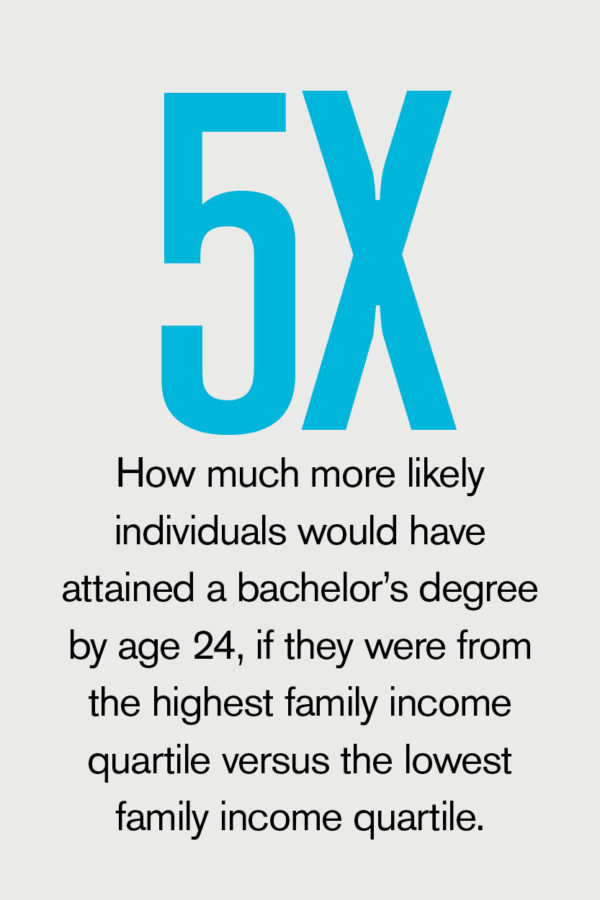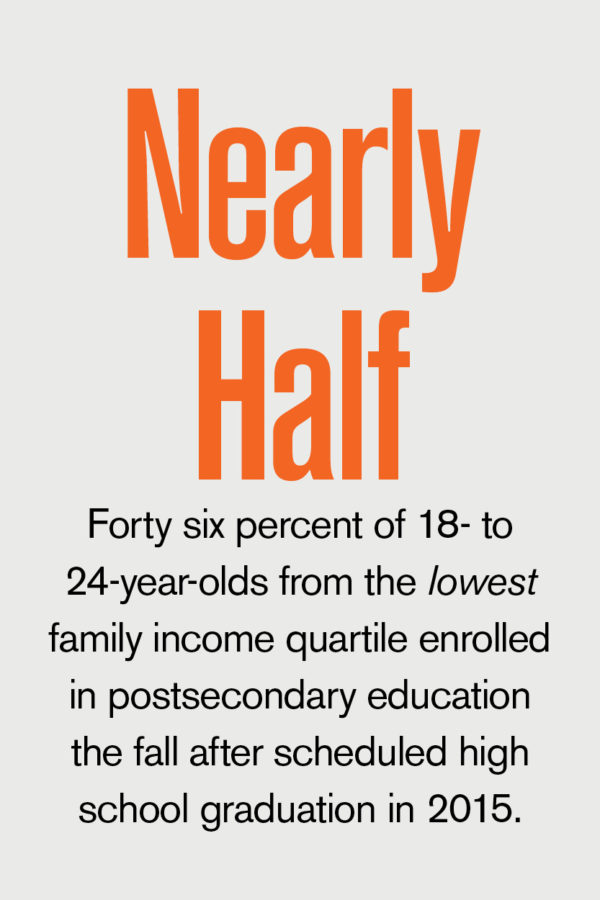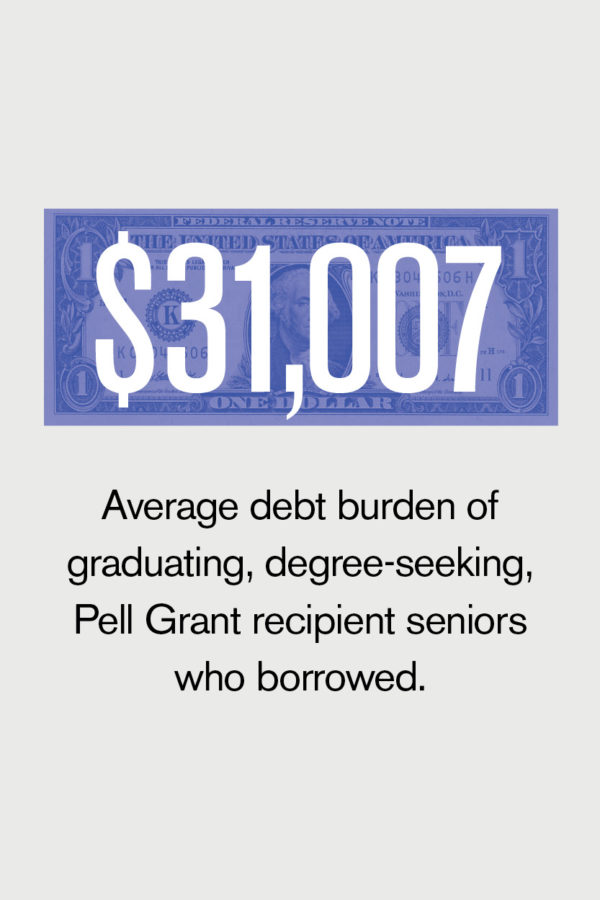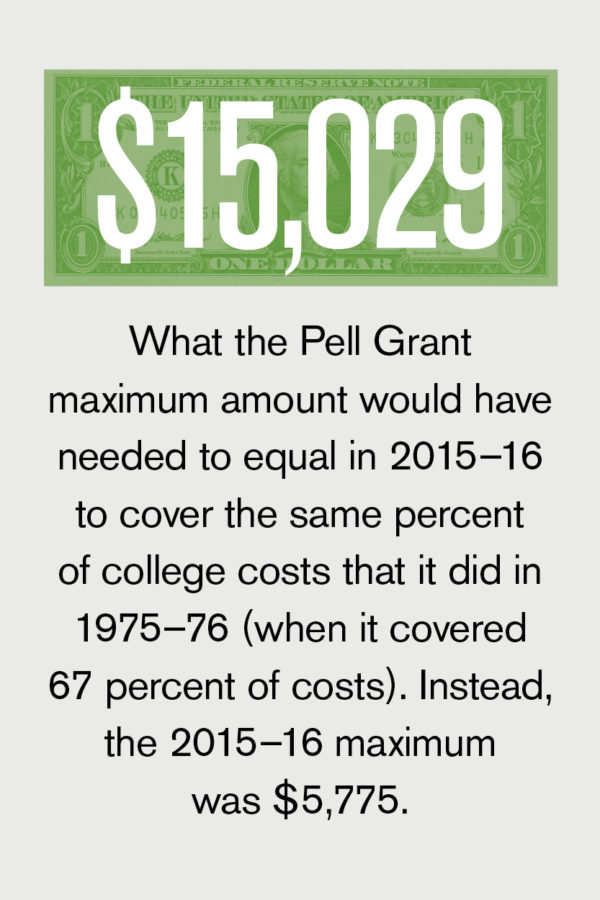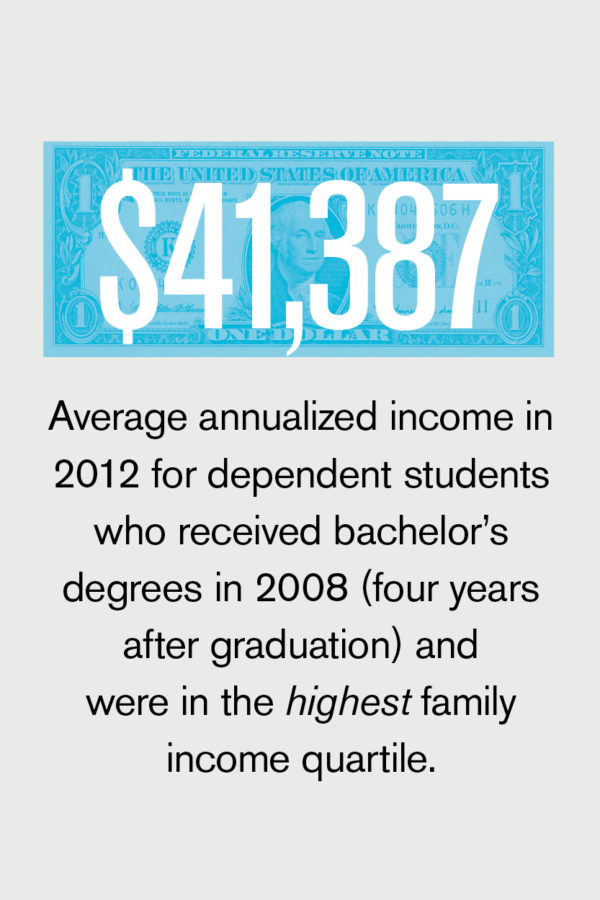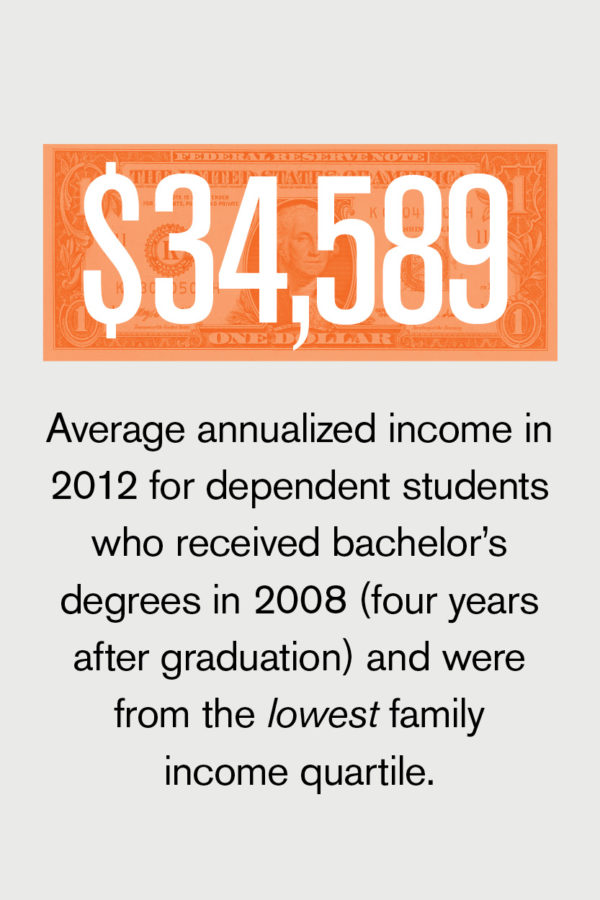The college bookstore can play a large role in career preparation and student success.
Higher education institutions need to shore up their career preparation efforts—a conclusion reached from research conducted in 2014 by Barnes & Noble College. Of the more than 3,000 students at two- and four-year colleges across the country who completed The College Student Mindset for Career Preparation and Success survey, only 25 percent of juniors and seniors had worked with their school’s career center.
“Based on this research, the biggest opportunity for our partners and all higher education institutions is in not underestimating the level of support that students need,” says Lisa Malat, vice president and chief marketing officer for Barnes & Noble College. “We found that students were starting late in the career preparation process, and, as a result, they were unprepared. They didn’t feel they had the necessary support or knew where to go to leverage the resources on campus,” she adds. “Colleges and universities put a lot of effort into career services programs, but students still don’t know what’s available.”
Increasing Visibility and Access
According to Malat, schools need to “push messages about career services resources through more effective communication channels.” To that end, the company launched several initiatives.
- The Jump Start Your Career Now program. Barnes & Noble worked with career services professionals on campuses at eight universities to help create tools designed for both faculty and students to use in the career development process.
“We engaged with faculty and career services staff to ramp up the communication that was needed on their campuses. These efforts included online workshops as well as live events at our stores,” explains Malat.
- The College Juice student blog. Another component of the Career Now initiative is its student blog, which focuses on achieving success in college. According to Malat, articles that are dedicated to career preparation are the most popular and widely read content on the blog, a fact that led to the company partnering with alumni from across the country to share stories about their career paths in hopes of helping current students identify their own.
- Faculty engagement. Further, the survey results confirmed that faculty are the second most important element influencing students’ career choices, after parents. More than half of juniors and seniors had spoken to their professors about potential career paths. Consequently, Barnes & Noble College sought opportunities to facilitate increased engagement among faculty and students, partnering with StoryCorps last year as a sponsor of the Great Thanksgiving Listen 2016, an initiative designed to encourage high school and college students to record interviews with elders over Thanksgiving weekend using the StoryCorps app.
To help its network of 270,000 faculty participate in the program in their classrooms, Barnes & Noble College developed a free, downloadable faculty toolkit they could use to encourage students in planning and developing their interviews while at the same time working more closely with students on career development. “Faculty want to spend more time with their students and help them along their career paths,” Malat says, “and this is one tool that helped facilitate that interaction.
“In general, we’ve had very good feedback about all these resources and related programs,” she adds. “Campuses have been able to leverage our research and bookstores to bring their career development resources to life.”
Research Applied
This has been the case at Sonoma State University, a public, midsize institution in Rohnert Park, Calif., with approximately 9,400 students. “Barnes & Noble has been on our campus for about 12 years,” says Neil Markley, associate vice president for administration and finance at the university. “Our relationship with the company has been invaluable in helping us understand various trends.”
For example, he says, “a lot of the information coming out of the company’s studies reaffirmed some of our own observations, particularly about students not knowing how to achieve their career goals.” Ninety-one percent of the students attending the university are undergraduates, so career preparation is a key area of focus.
In fact, as part of developing the university’s “Student Success Plan,” which coincides with California State University’s Graduation Initiative 2025, campus leaders examined a variety of factors to determine what they could improve and make more accessible, from the time a student enters the university until he or she graduates.
Other specific goals include:
- Boosting Sonoma’s four- and six-year graduation rates for freshmen and transfer students. To achieve this goal, the university plans to hire additional full-time graduation advisers.
“As part of our review, we concluded that one of our areas that needs more resources is academic support services,” Markley notes. “Sometimes the support service areas bear the brunt of budget cuts, and it happened that way on our campus. Now the administration is taking strides to shore up this underfunded area and reallocate resources to student support services, which, as the Barnes & Noble College survey points out, is critical.”
- Establishing more innovative approaches to presenting career-focused resources. To that end, the Sonoma University Bookstore has hosted several small to midsize events featuring local speakers. For example, business owner and cookbook author Tony Gemignani, who is a World Pizza Cup winner, visited two years ago. “Barnes & Noble College worked with us to host a cooking demonstration with our students, and Tony talked with them about his life and career, in addition to signing his book, Pizza Bible,” Markley explains.
To foster similar dialogues between students and faculty, there is an area in the store that highlights books and other materials created by faculty. “We’ve hosted book events for faculty, as well, to encourage their engagement with students,” Markley says. “We are committed to making the bookstore a gathering place on campus.”
APRYL MOTLEY, Columbia, Md., covers higher education business issues for Business Officer.
With demonstrations of all kinds disrupting normal campus operations, how best can college and university leaders prepare to support student protests and other unforeseen events, while ensuring the safety of the larger campus community and the institution’s assets? NACUBO’s March 15 webcast, Preparing for Campus Protests and Civil Disobedience, provides a helpful overview of the logistical requirements and the financial considerations associated with the myriad challenges and often unknown outcomes of these events. (For a more detailed discussion on campus unrest, read “When Activism Rises,” in the September 2017 issue.)
Sue Riseling, executive director of the International Association of Campus Law Enforcement Administration (IACLEA) and a former chief of police at University of Wisconsin Madison, along with David Mitchell, University of Maryland’s chief of police, discuss the role of the business office in preparing plans that can mitigate the cost and potential damage of campus protests and related incidents. Both stress the importance of preplanning with regard to staffing, training, and equipment, and a clear understanding of processes and approvals for emergency procurement of services and additional equipment when needed.
Among the many tips offered during the webcast are the following:
- Mitchell suggests that if you have the luxury of forecasting what might happen during a particular event, use that time to refresh existing protocols with staff, such as evacuation plans.
- Everything from where to house people or feed them to how much police line barrier tape you need can emerge as an unanticipated issue, says Riseling. Crisis planning for potential extended situations also requires ensuring that you have adequate plans in place for 24/7 staffing, if needed.
- While redundancy can be expensive, good crisis planning requires backup capabilities, whether that means people, equipment, or infrastructure, says Riseling. This includes redundant communication systems in the event that, for instance, you experience an associated cyberattack on the institution’s computer systems, or an active shooter situation occurs in conjunction with a protest.
- Preplanning allows an institution to protect particular assets of value, such as an iconic statue on campus, by cordoning off certain areas to crowds. During an event, however, monitoring social media to pick up on any swell of reaction among protesters will help security personnel position themselves appropriately to take action, if necessary.
- Because many institutions may not be able to sustain a campus security presence beyond about 72 hours without help from their local municipality, make certain that when you do need outside assistance you have established parameters for who is in charge, notes Riseling. And, from a fiscal standpoint, know upfront who is paying, and how much. It’s not unheard of for an event to quickly reach six figures, she adds.
- Another imperative: If your institution doesn’t already have an emergency operations center, it’s a good idea to create one, says Riseling. This doesn’t have to be a dedicated space, she adds. It could be a well-equipped classroom or conference room that has emergency power and is wired for all potential communication needs, including camera feeds. Larger institutions may have several emergency operation centers located across a campus or even off campus. Wherever the location, practice exercises using the center will ensure everyone knows where to go and how to use the equipment.
- In all instances, finance personnel with spending authority should be present during the event to make decisions about any emergency spending that may be required. This could include authorizing payment for shuttles to escort students and faculty off campus and out of danger. While many institutions have an established line of credit for emergency situations, you definitely don’t want to be arguing over small expenditures at the height of a crisis, notes Riseling.
- Because any emergency situation can result in an insurance claim, making certain to track expenditures or losses from the outset is crucial, notes Mitchell. Once any event or crisis situation has concluded, that is when the process may begin in earnest for finance personnel, who will need to then document costs and damages for potential reimbursement.
SUBMITTED BY Karla Hignite, New York City, contributing editor for Business Officer.
A survey of more than 100 in-person interviews at the WACUBO 2017 Annual Conference finds that “more than three quarters (76 percent) of higher education financial executives lack a high degree of confidence in their long-term financial strategic planning.” —PFM Solutions
Fast Fact
Updated Higher Education Data
The most recent First Look data, published by the National Center for Education Statistics, show that in academic year 2015–16 U.S. postsecondary educational institutions enrolled approximately 26.9 million individual students. Roughly half of these students were women. Just under 40 percent of the students were enrolled at public four-year institutions, a third attended public two-year colleges, and 19 percent studied at private, nonprofit institutions.
In terms of diversity, just over half (13.6 million) of all students were white or nonHispanic. Latino or Hispanic students numbered 4.3 million; black or African American totaled 3.6 million; and numerous other minorities accounted for the remaining 5.4 million.
Topping the Board Agenda
At the recent Women Corporate Directors Global Institute, in New York City, top board leaders, CEOs, and governance experts from a variety of companies gathered to discuss challenges that boards face in today’s era of market competition, volatility, and disruption. A program rich with panel and roundtable discussion, the meetings identified the top issues on board agendas—with a number of those challenges posing potential impact on higher education governance as well.
Institute participants agreed that while today’s “disruption frenzy” is hard to resist, the definition of disruption needs to go beyond technology to consider re-evaluating business models and processes. Among the other top concerns: an innovative culture requires conscious cultivation; workforce transformation supplants workforce replacement; and innovative partners create new opportunities for growth.
Source: Indicators of Higher Education Equity in the United States: 2017 Trend Report, Washington, D.C.: Pell Institute for the Study of Higher Education, Council for Education Opportunity, and Alliance for Higher Education Democracy of the University of Pennsylvania





